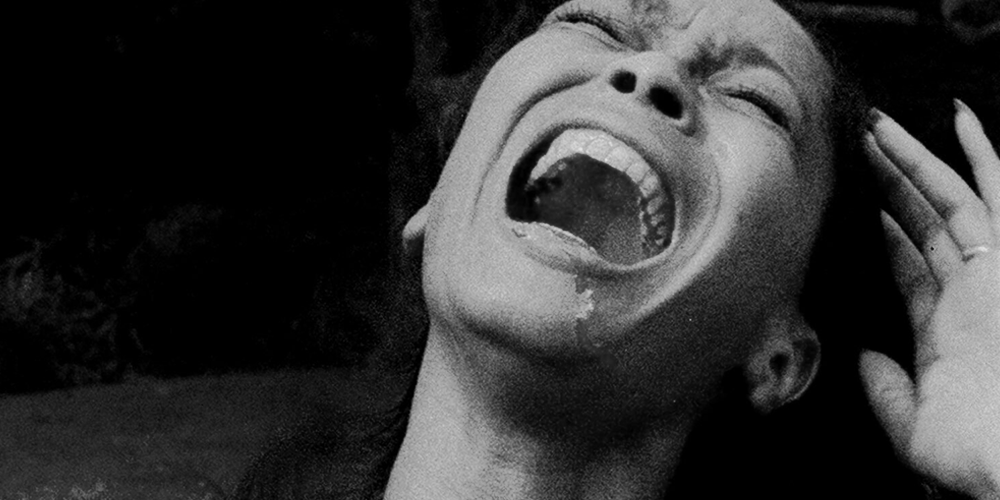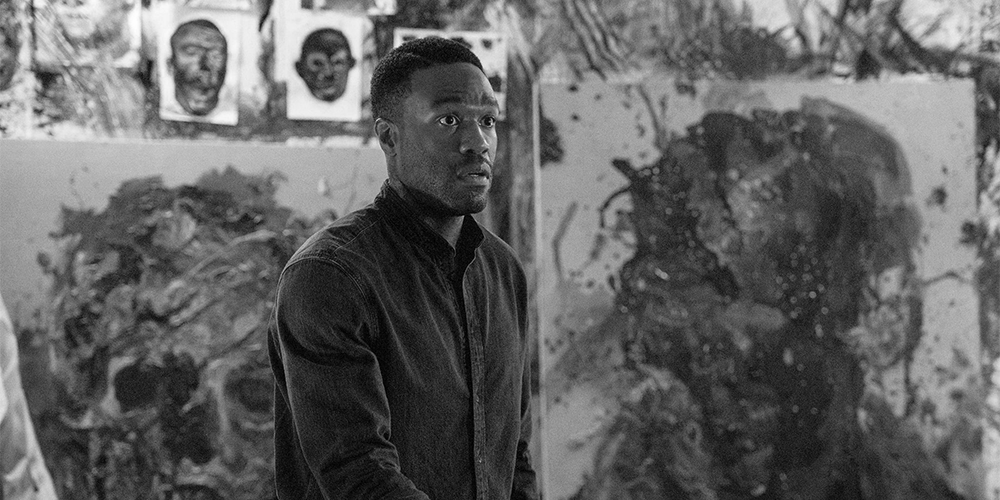Black Lives Matter.
They do. We don’t proclaim it because other lives don’t matter, or because Black lives matter more. Black lives should be equitable; Black lives should be valued; Black lives shouldn’t be taken away for no reason. Right now, Black lives are also proportionally the most at risk in America, and that’s why the slogan also matters. Unfortunately, it’s nothing new; Black lives have historically been looked down upon by colonial slavers, modern-day bigots, and yes, even the world of cinema.
We wanted to write this article for a few reasons: to officially exclaim our unquestionable support for black people all over the world and for the Black community’s fight against police brutality here in the United States, to talk about our own shared experiences, and to hopefully educate others on Black inclusion in the subject we know best… horror movies!

Growing up in the Metro Detroit area, we’ve lived side-by-side with Black people nearly all of our lives. Despite that, we are primarily of white European heritage, and so we can never profess to understand the struggle that Black Americans face every single day, but we’ve witnessed the racial tensions and difficulties faced by them constantly. We practically live in different worlds, different dimensions, all because of the color of our skin. We truly wish that weren’t the case, and want to strive to make it so as much as our drive and privilege allow us.
The horror genre has had its ups and downs over the years. Black horror has certainly evolved over the years and shares more of the box office spotlight now, but still challenges the same kinds of social issues because they never really left. Racism, slavery, segregation, discrimination – the same struggles persist, despite the “progress” we’ve made. It doesn’t make it any less important to discuss, however.
The Birth of a Nation, though technically not a horror film, glorified white heroism and depicted Black people cruelly. Many films, including some horror films, followed similar trends in the early 20th century by painting Black people as primitive, unintelligent, or otherwise goofy. Let’s not forget that segregation wasn’t legally abolished until 1964, so it’s hardly a surprise that the film medium pre-1960 almost entirely treated this group as less than human.

With the release of George Romero’s Night of the Living Dead, Duane Jones lifted Black America on his shoulders – he was the hero! And so began a new trend, a new pattern: the Black person as a complex character, a lead role, as human… sometimes. Coincidentally, Black horror found a somewhat substantial place in the vampire subgenre throughout the 70s, 80s, and 90s – which would be an interesting exploration all on its own – ranging from films like Blacula and Ganja + Hess to Vampire in Brooklyn. Vampires in cinema were, of course, typically portrayed as powerful, intelligent, and charming, characteristics that Black characters in prior decades often lacked.
Throughout this time, themes emerged that are still consistent with Black horror movies today: those of battling oppression and stereotypes, creating new futures separate from white-dominated history, and so much more. Other films like Tales from the Hood and the later Leprechaun sequels used the all-too-real aspect of poverty and street violence in Black neighborhoods as a framework to tell engaging horror stories focused on overcoming such systemic difficulties. Then, of course, People Under the Stairs and Get Out, among others, again highlighted the disparity between races under the guise of a secretly extreme desire of some wealthy white suburbanites to control or kill African-Americans.

Jordan Peele has certainly brought the sociopolitical underpinnings of Black horror back into the spotlight, supported by a tried and true love for the genre itself, but Black filmmakers and actors have been starring in many other kinds of horror films for some time now with great success, and they don’t always die first. Quite frankly, we’re glad that that particular trope is dying off. Even when the Black character is portrayed as the villain, like Tony Todd’s legendary Candyman, we no longer tend to believe that it’s simply because they’re Black, but because there’s more to the story.
The upcoming Antebellum also intends to explore modern-day African-American sensibilities clashing with past terrors during the colonial era of American history where slavery and plantation labor ran rampant across the country, and there’s also the highly-anticipated reimagining of Candyman by up-and-comer Nia DaCosta. So while contemporary Black filmmakers continue to address these issues with new horror films, fans can appreciate that we’re still talking about them for a good reason, and a little differently too; we listen more, we root against oppression and bigotry due to more progressive understanding and empathy, and we look to this kind of horror to intelligently address the existence of racism and the potential solutions we can raise to defeat it.

Black horror movies, though a niche subgenre, are nevertheless an important part of the genre as a whole because of their ability to address the very real fears that Black people feel every day. We want to continue to support these films and the Black community because it’s the right thing to do, and we also hope that more Black filmmakers emerge onto the scene and rise to prominence. We’re not experts on Black horror cinema, but we hope that this article made you think a little, empathize more, and develop an interest in seeing more of these kinds of films.
Below, you’ll be able to find just a few resources for donating to community efforts to fight racism and police brutality as well as some prominent Black horror filmmakers/actors and horror films to look up. That said, we do want to highlight a poignant and well-executed documentary on Shudder, Horror Noire: A History of Black Horror, as a particularly important resource for learning more about Black horror movies and the people behind them.
Thank you,
— Barnabas & Samael
Resources:
Donate*
African American Cultural Heritage Action Fund
Colin Kaepernick Know Your Rights Camp
Minnesota Rapid Response Coalition
* Please feel free to suggest any other legitimate donation resources in the comments or via direct message.
Black-owned Businesses
Website Planet – Support Black-Owned Businesses: 181 Places to Start Online
Online Tools
Article – How to Support Black Lives Matter Online
Article – What is Critical Race Theory (CRT)?
Filmmakers/Actors/Crew
Films

